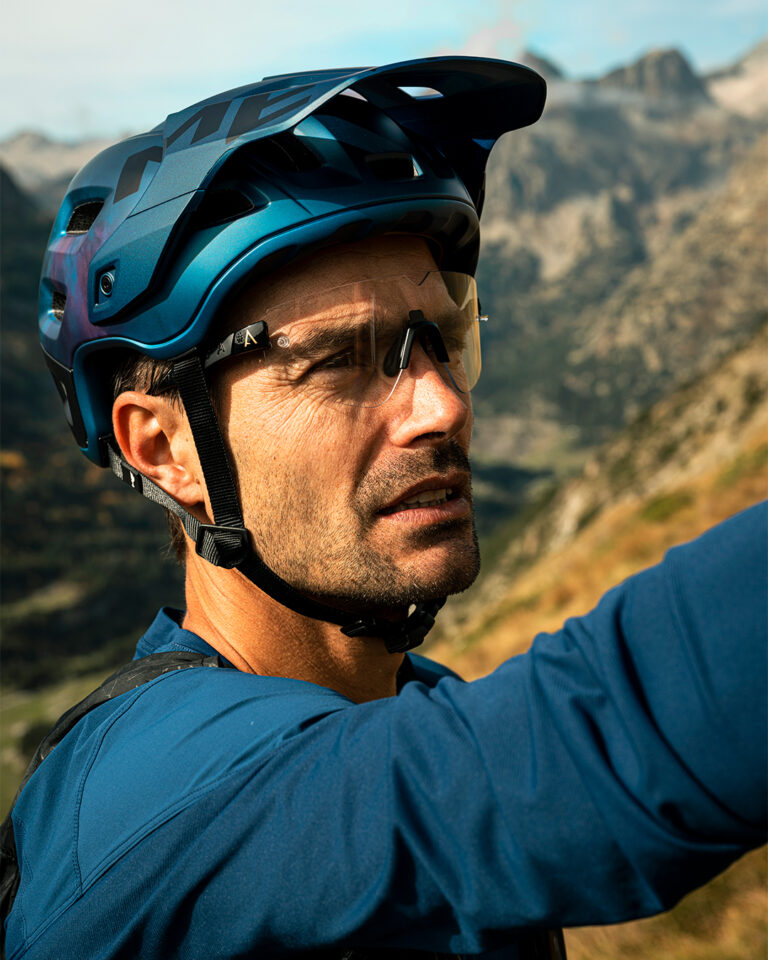Eco-Friendly Mountain Bike Helmets: Merging Sustainability with Safety

Key Point Summary of Eco-Friendly Mountain Bike Helmets:
- Sustainable Materials: Eco-friendly helmets use materials that are either recycled or have a lower environmental impact.
- Production Process: The manufacturing of these helmets focuses on reducing carbon footprint.
- Durability and Quality: Sustainable doesn’t mean lower quality; these helmets meet standard safety requirements.
- End-of-Life Cycle: Consideration of the helmet’s recyclability and biodegradability.
- Brands Leading the Way: Some brands are pioneering in this area, offering eco-friendly options.
- Cost Implications: Understanding the price point in comparison to traditional helmets.
Sustainable Materials Make a Difference
Eco-friendly helmets are typically made from sustainable materials. This could mean recycled plastics, biodegradable components, or materials sourced from sustainable practices. I remember my first eco-friendly helmet; it was a revelation to see materials like bamboo fiber being used.
The Manufacturing Process Counts
It’s not just about the materials; the way these helmets are made is also crucial. Manufacturers of eco-friendly helmets often employ processes that aim to reduce carbon emissions and energy consumption. Some even use renewable energy sources in their production lines.
Durability and Quality Go Hand-in-Hand
There’s a common misconception that sustainable equals lesser quality. This is far from the truth with eco-friendly helmets. They must meet the same safety standards as traditional helmets. In fact, some of the eco-friendly models I’ve used have been on par, if not superior, in terms of durability.
End-of-Life: Thinking Ahead
A key aspect of eco-friendly helmets is their life cycle. What happens when the helmet has served its purpose? Many are designed to be recyclable or biodegradable, which helps reduce landfill waste. This forward-thinking approach is something that resonates deeply with me as a cyclist conscious about my environmental footprint.

Brands Leading the Sustainable Charge
Several brands are at the forefront of this eco-friendly movement. Companies like Urge, Kali Protectives, and POC are integrating sustainable practices into their helmet designs. They’re pioneering in using organic materials, ensuring ethical production processes, and even innovating in packaging.
Cost Implications: Investment in Sustainability
It’s true that eco-friendly helmets can sometimes come with a higher price tag. But it’s an investment in sustainability and often in a product that brings innovative design and materials. Plus, supporting such products means encouraging more eco-conscious practices in the industry.
Reflecting on Broader Environmental Impact
Embracing eco-friendly helmets goes beyond personal preferences, reflecting a broader commitment to environmental stewardship in the cycling community. When participating in races or traversing through natural landscapes, the choice to wear gear made from sustainable materials sends a powerful message about the importance of protecting the environments we cherish. It’s a collective step towards a more responsible and eco-conscious approach in our sport, resonating with a growing number of cyclists who seek to harmonize their passion for riding with their ecological values
Concluding Thoughts
In summary, eco-friendly MTB helmets are not just a trend; they’re a significant step towards sustainable cycling. They offer the same level of protection and comfort as traditional helmets while reducing environmental impact.
The POC Myelin helmet is an eco-friendly choice for cyclists, particularly those who commute in urban settings. It stands out for its construction from 50% recycled materials and its design that facilitates easy deconstruction for recycling at the end of its lifespan. The helmet also features a glue-free construction and a unique fit system inspired by snap-fit systems found in baseball caps, offering a secure and comfortable fit. Additionally, it is designed with ventilation zones for breathability, making it suitable for various weather conditions. However, some users have reported fitting issues around the ears, and its simple design may not appeal to race-focused cyclists
In concluding our discussion on eco-friendly mountain bike helmets, it’s enlightening to look at the strides made by companies like Urge Bike Products. They have set a benchmark in sustainable helmet production. Since 2011, Urge has impressively reduced its CO2 emissions by 50% through a dedicated approach that includes using recycled and sustainable materials, minimizing the use of fossil fuels and virgin plastics, and employing renewable power resources.
Their helmets showcase innovative environmental considerations: hard shell helmets like Venturo and Archi-Deltar utilize water-based paints and reground material mixes, while in-mold helmets such as Supatrail and All Air are made with UV inks, recycled PVC, and again, water-based paints. The liners across all their helmets are crafted from recycled EPS, and the straps are made from recycled PET water bottles. Additionally, they use bamboo fiber and ECO nylon in their fit pads.

Even their packaging reflects this commitment, featuring FSC color boxes from responsibly managed forests, organic inks for manuals, and biodegradable, compostable corn bags. These initiatives by Urge Bike Products are a testament to the possibility of merging high-quality, safe cycling gear with robust environmental stewardship.
As cyclists, especially those of us with a passion for both the sport and the planet, supporting brands like Urge that are dedicated to sustainability can make a significant difference. It’s about choosing gear that not only protects us but also aligns with a larger commitment to preserving the environments we love to explore on our bikes.
Stay safe and ride sustainably!
John
FAQ
Do all helmets have BPA?
Not all helmets contain BPA (Bisphenol A). The presence of BPA in helmets depends on the materials and manufacturing processes used by the helmet manufacturer. Many helmet manufacturers are moving towards more eco-friendly and health-conscious materials, which may exclude BPA. However, it’s important to check the specific materials used in a helmet if you’re concerned about BPA.
Who makes the safest bike helmets?
The manufacturers known for producing the safest bike helmets include brands like Giro, Bell, Specialized, POC, and Smith. These companies have a reputation for rigorous testing and innovation in helmet safety technology, often incorporating features like MIPS (Multi-directional Impact Protection System) and advanced materials to enhance protection. However, the “safest” helmet also depends on correct fit and suitability for the intended cycling discipline.
What are the best materials for bicycle helmets?
The best materials for bicycle helmets typically include expanded polystyrene (EPS) foam for shock absorption, polycarbonate or other durable plastics for the outer shell, and often newer materials like Koroyd or MIPS technology for additional protection. These materials are chosen for their ability to absorb impact, durability, and lightweight properties, contributing to both safety and comfort for the rider.
Is a mountain bike helmet safer than a road bike helmet?
Mountain bike helmets are not inherently safer than road bike helmets; they are designed differently to suit the specific needs of mountain biking, such as offering more head coverage and features like visors.






